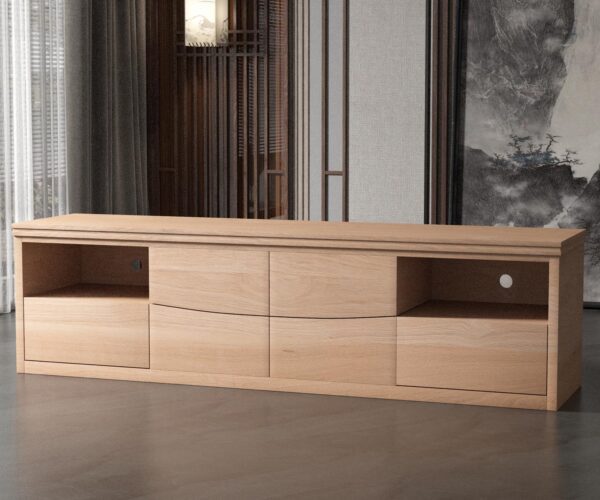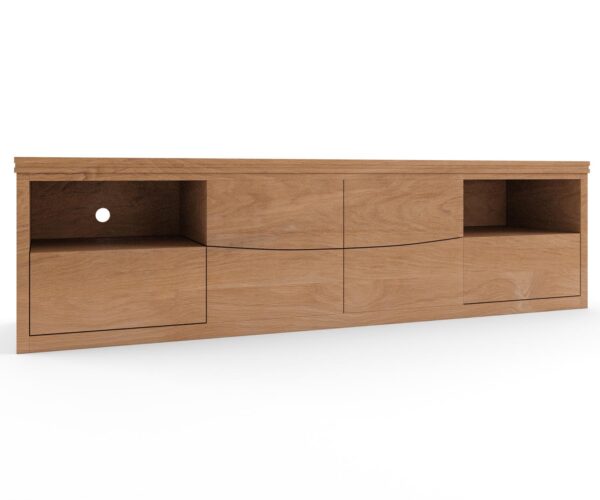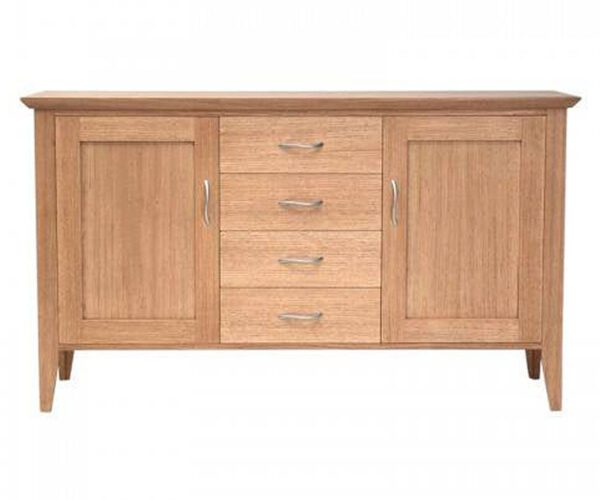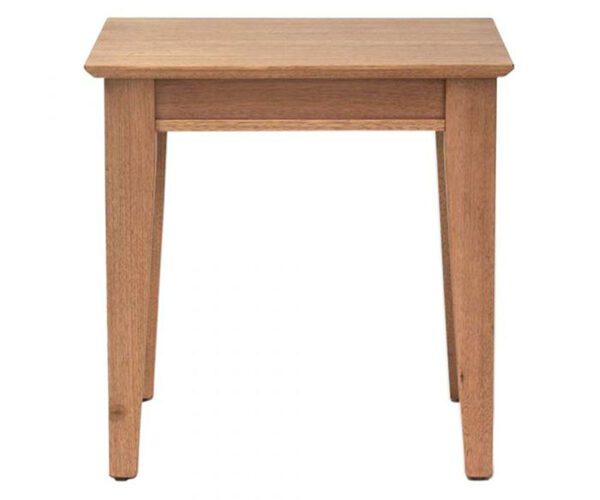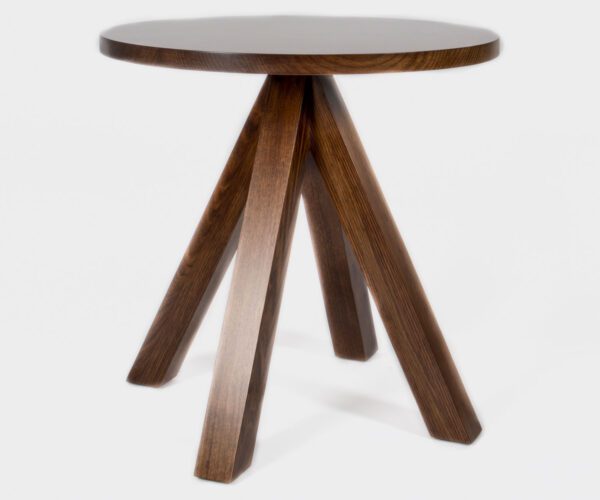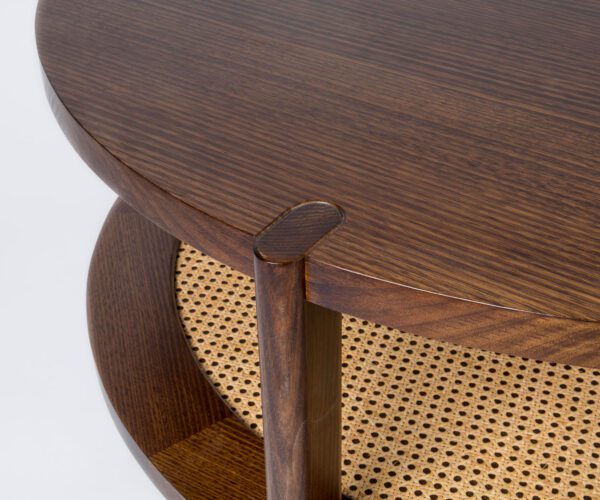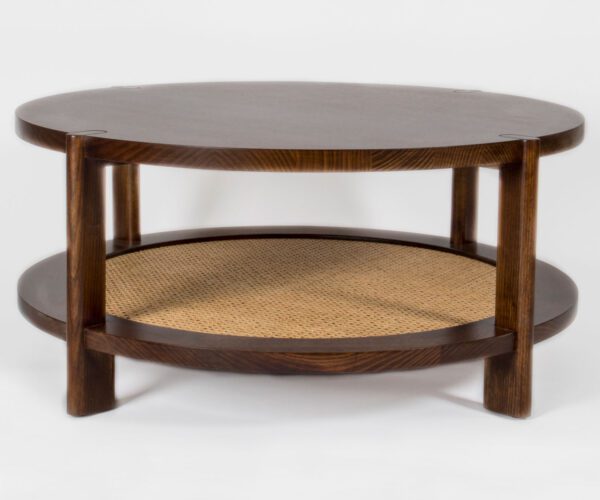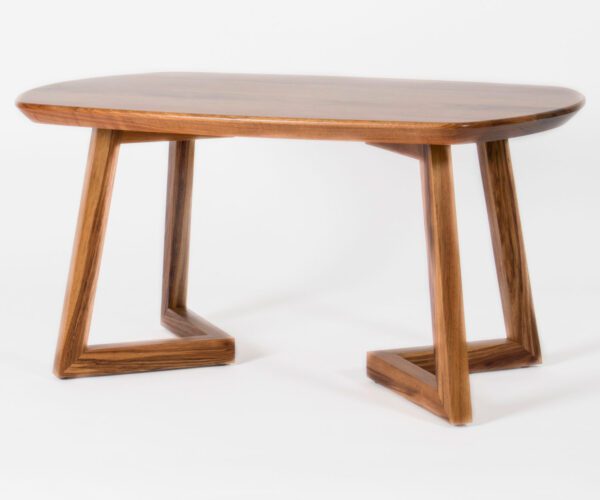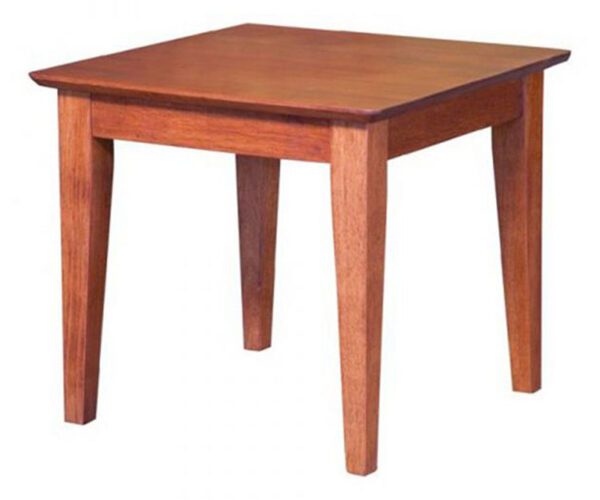10 Custom Furniture Trends: Shaping the Future of Commercial Spaces in Australia
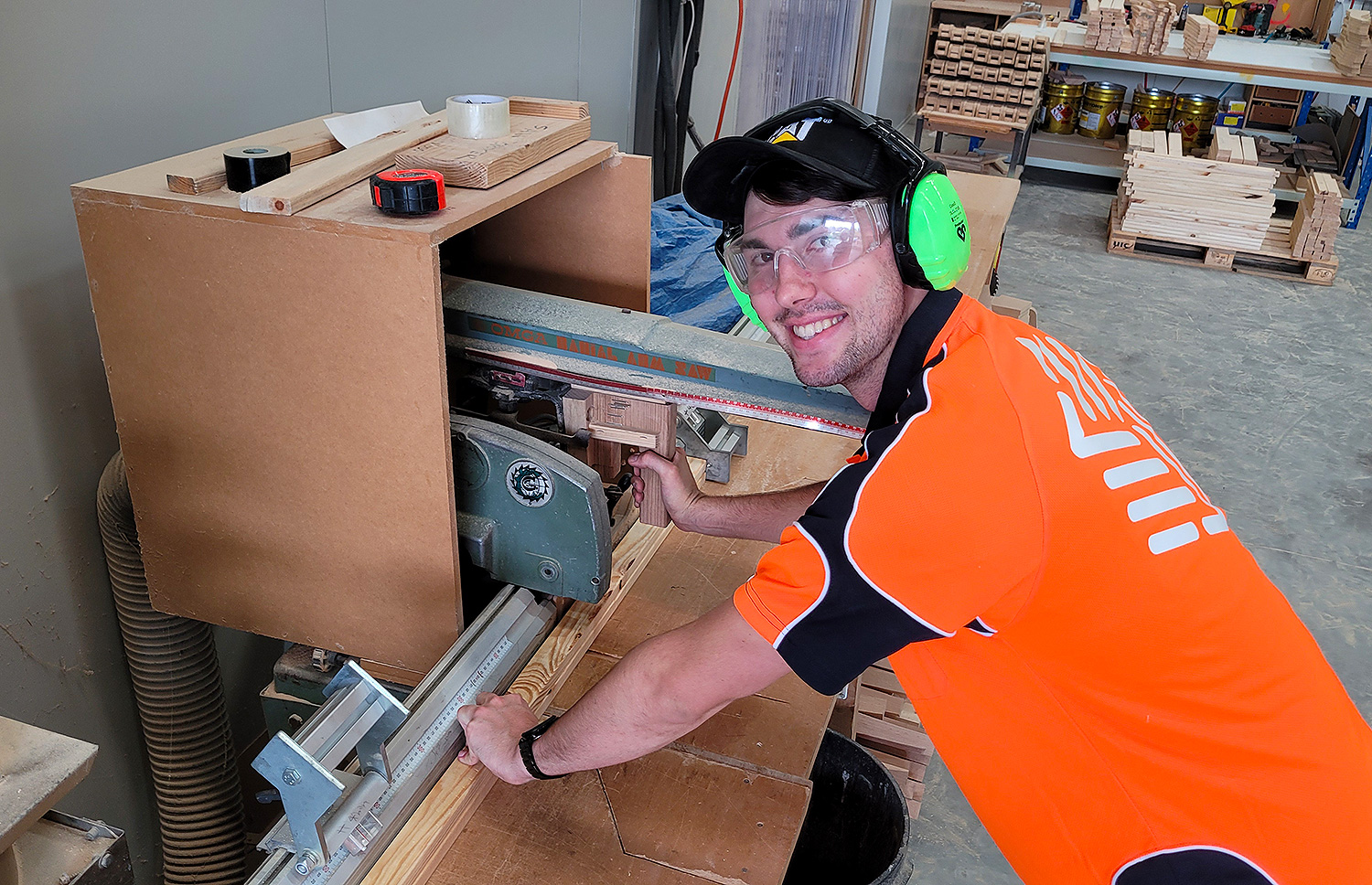
The design and functionality of commercial furniture plays a pivotal role in shaping the overall experience of those who live and work within these environments. As businesses across Australia embrace innovation and versatility in their environments, custom furniture trends are at the forefront of this evolution. In this article, we explore ten custom furniture trends that are shaping the future of commercial spaces across the country.
1. Flexible and Agile Workstations
The traditional office furniture setup is giving way to dynamic, flexible workstations. Custom furniture designs cater to the need for agile spaces, with modular desks and collaborative seating arrangements that adapt to the changing requirements of a modern workplace.
- Modular Desk Systems: Customized modular desks are a cornerstone of flexible workstations. These desks are designed with adaptability in mind, allowing for easy rearrangement and reconfiguration as the needs of the workplace evolve. This modular approach ensures that the workspace can seamlessly adjust to accommodate changes in team structures, project requirements, and collaborative initiatives.
- Collaborative Seating Arrangements: The emphasis on collaboration is evident in the design of custom furniture, particularly in seating arrangements. Agile workstations feature collaborative seating options that encourage teamwork and interaction among employees. Customized seating solutions may include flexible benching systems, communal lounge areas, and adaptable seating clusters that foster a sense of connectivity and shared creativity.
- Adjustable Furniture Configurations: Custom designs go beyond the one-size-fits-all approach, recognizing the diverse tasks and preferences within a modern workplace. Adjustable furniture configurations, such as height-adjustable desks and movable partitions, empower employees to tailor their immediate surroundings to suit specific tasks, promoting comfort and productivity.
- Technology Integration for Connectivity: Custom furniture for agile workstations seamlessly integrates technology. From built-in power outlets to cable management solutions, these designs acknowledge the importance of staying connected in the digital age. The incorporation of smart features ensures that the workspace is not only flexible in its physical layout but also technologically adaptive.
2. Biophilic Design Integration
Bringing the outdoors inside is a trend that continues to gain momentum. Custom furniture inspired by biophilic design incorporates natural elements, such as wood finishes and greenery, fostering a connection with nature and promoting a healthier work environment.
- Natural Material Selection: Custom furniture inspired by biophilic design begins with the careful selection of natural materials. Wood, with its warm and organic aesthetic, takes center stage in these designs. Custom-made desks, chairs, and shelving units may feature rich wood finishes that not only add visual appeal but also evoke a sense of connection with the natural world.
- Greenery and Plant Incorporation: A hallmark of biophilic design is the incorporation of greenery. Custom furniture solutions may include built-in planters, living walls, or strategic placements for potted plants. This infusion of green not only enhances aesthetics but also contributes to improved air quality, fostering a healthier and more refreshing workspace.
- Nature-Inspired Patterns and Textures: Beyond the use of actual natural elements, custom furniture embracing biophilic design often incorporates patterns and textures inspired by nature. From leaf motifs on upholstery to textures mimicking natural materials, these design elements add depth and authenticity to the overall aesthetic of the workspace.
- Daylight Optimization: Biophilic design isn’t limited to furniture alone; it encompasses the entire spatial experience. Custom furniture arrangements may be strategically designed to optimize access to natural light. This not only reduces the reliance on artificial lighting but also creates a brighter and more vibrant atmosphere that positively impacts mood and productivity.
3. Ergonomic Excellence
Employee well-being is at the forefront of workplace design. Custom furniture is increasingly focused on ergonomic solutions, providing comfortable seating, adjustable desks, and supportive designs that contribute to a healthier and more productive workforce.
- Customizable Seating Solutions: Ergonomic excellence begins with seating that is not only comfortable but also adjustable to individual needs. Custom chairs with lumbar support, adjustable armrests, and seat height options ensure that employees can tailor their seating for optimal comfort and posture, reducing the risk of discomfort and musculoskeletal issues.
- Height-Adjustable Desks: Recognizing the adverse effects of prolonged sitting, custom furniture solutions often feature height-adjustable desks. These desks empower employees to switch between sitting and standing positions throughout the day, promoting movement, reducing sedentary behavior, and contributing to overall well-being.
- Supportive Designs for Long Hours: Custom furniture designs take into account the demands of modern work, where long hours at the desk are common. Ergonomically designed workstations may include features such as keyboard trays, monitor arms, and cable management systems to enhance functionality while supporting a comfortable and efficient workflow.
- Task-Specific Ergonomics: Different tasks require different ergonomic considerations. Custom furniture takes this into account, offering task-specific solutions. Whether it’s designing collaborative workspaces with flexible seating or providing ergonomic solutions for dedicated focus areas, custom designs align with the varied tasks employees undertake.
4. Technology Integration
The integration of technology into commercial spaces is a non-negotiable aspect of modern design. Custom furniture accommodates this need seamlessly, with features like built-in charging stations, wire management solutions, and smart furniture that enhances the user experience.
- Built-in Charging Stations: Custom furniture designs are responsive to the ubiquitous need for device charging. Desks, tables, and seating often feature built-in charging stations equipped with USB ports and power outlets. This integration caters to the demands of a digitally connected workforce, ensuring that devices can be charged conveniently within the workspace.
- Wire Management Solutions: The challenge of cable clutter is effectively addressed through custom furniture solutions with built-in wire management systems. Cable channels, hidden compartments, and integrated pathways are seamlessly incorporated into the design, maintaining a clean and organized appearance while facilitating easy access to power sources.
- Smart Furniture for Enhanced Functionality: The rise of smart technology is reflected in custom furniture designs that leverage connectivity for enhanced functionality. Smart desks may include features such as adjustable heights controlled through apps, customizable lighting schemes, or even integrated sensors that adapt the workspace based on user preferences. This level of customization contributes to a more personalized and efficient work environment.
- Interactive and Collaborative Displays: Custom furniture designs embrace interactive and collaborative displays. Meeting tables may incorporate touchscreen technology for collaborative brainstorming sessions, and presentation surfaces may double as interactive displays. This integration fosters engagement and productivity during collaborative activities.
5. Sustainable and Eco-Friendly Materials
As environmental consciousness grows, custom furniture trends in Australia emphasize the use of sustainable and eco-friendly materials. From recycled wood to environmentally responsible manufacturing processes, businesses are leaning towards furniture that aligns with their commitment to sustainability.
- Recycled and Reclaimed Wood: One of the hallmarks of sustainable custom furniture is the utilization of recycled and reclaimed wood. This not only minimizes the demand for new timber but also repurposes existing resources, reducing the environmental impact of deforestation. Furniture crafted from recycled wood carries a unique character, adding both history and eco-consciousness to the design.
- Environmentally Responsible Manufacturing: The manufacturing processes themselves are evolving to align with sustainable practices. Eco-friendly custom furniture manufacturers prioritize energy efficiency, waste reduction, and the use of non-toxic materials. By embracing environmentally responsible practices, these businesses strive to minimize their carbon footprint throughout the entire production cycle.
- Upcycled Materials and Fabrics: Sustainable custom furniture extends beyond wood, incorporating upcycled materials and fabrics. From repurposed metals to eco-friendly textiles made from recycled fibers, these choices reflect a commitment to giving new life to discarded materials, diverting them from landfills and contributing to a circular economy.
- Low-VOC Finishes and Adhesives: Volatile organic compounds (VOCs) contribute to indoor air pollution. Sustainable custom furniture addresses this concern by utilizing low-VOC finishes and adhesives. This not only enhances the indoor air quality but also ensures that the final product is healthier for both the occupants and the environment.
6. Collaborative Spaces
The shift towards collaborative work environments has led to the rise of custom furniture designed for teamwork. From modular seating arrangements to communal worktables, these designs foster creativity and communication in the workplace.
- Modular Seating Arrangements: Custom-designed collaborative spaces often feature modular seating arrangements that are both flexible and adaptable. These configurations can be easily reconfigured to suit different group sizes, project requirements, or impromptu meetings. Modular seating encourages a dynamic and collaborative atmosphere, providing employees with a versatile environment that supports various types of collaborative activities.
- Communal Worktables: Central to collaborative spaces are communal worktables that serve as hubs for idea exchange and joint projects. Custom-designed communal tables are tailored to the specific needs of the workspace, incorporating features such as built-in power outlets, cable management solutions, and ergonomic considerations. These tables become focal points for collaborative endeavors, fostering a sense of unity and shared purpose among team members.
- Flexible Furniture Configurations: Custom furniture designed for collaboration recognizes the need for flexibility in configurations. From movable whiteboards to agile furniture on wheels, these designs enable employees to transform the workspace according to the nature of their collaborative activities. The ability to easily adapt the environment promotes a culture of agility and responsiveness within the workplace.
- Diverse Work Settings: Collaborative spaces are not one-size-fits-all, and custom furniture reflects this diversity. Designs may incorporate various work settings, such as lounge-style seating for casual discussions, standing-height tables for quick meetings, and enclosed pods for focused group work. This diversity allows employees to choose the environment that best suits their collaborative needs at any given moment.
7. Bold Colours and Unique Shapes
Commercial spaces are moving away from the monotony of neutral colours and predictable shapes. Custom furniture trends include bold and vibrant colour palettes, as well as unique and unconventional shapes that add a touch of personality to the workspace.
- Vibrant Colour Palettes: The era of bland and muted colour schemes is giving way to a burst of vibrant hues in custom furniture designs. Bold colours, ranging from energetic reds and blues to calming greens and yellows, are being incorporated into office furniture, injecting a sense of liveliness and enthusiasm into the workspace. These colours not only reflect the brand identity but also contribute to a stimulating and inspiring atmosphere.
- Personalized Brand Aesthetics: Custom furniture allows businesses to personalize their brand aesthetics through colour choices. Bold colours can be strategically integrated to align with brand identity, creating a cohesive visual narrative across the workspace. This level of customization ensures that the commercial environment becomes an extension of the brand’s personality.
- Accent Pieces and Statement Furniture: Custom furniture trends include the introduction of accent pieces and statement furniture that serve as focal points in commercial spaces. Whether it’s a vibrant sofa in the reception area or a boldly coloured conference table, these statement pieces become conversation starters and contribute to a more memorable and engaging workspace.
- Playful and Whimsical Designs: Unpredictable shapes and whimsical designs characterize the new wave of custom furniture. From uniquely shaped desks to asymmetrical shelving units, these designs break away from the traditional rectangular forms, introducing an element of playfulness and creativity into the workspace.
8. Wellness Rooms and Relaxation Zones
Recognizing the importance of employee well-being, custom furniture designs now include wellness rooms and relaxation zones within commercial spaces. These areas are equipped with comfortable seating, calming aesthetics, and features that promote relaxation and mindfulness.
- Comfortable Seating and Ergonomic Design: Wellness rooms and relaxation zones feature custom furniture designed with comfort as a top priority. Plush seating options, ergonomic loungers, and cozy furnishings create an inviting atmosphere where employees can unwind and recharge. The designs prioritize ergonomic principles to ensure that the furniture supports relaxation and promotes physical well-being.
- Calming Aesthetics and Biophilic Elements: The aesthetics of these dedicated spaces play a crucial role in promoting relaxation. Custom furniture designs incorporate calming colour palettes, natural textures, and biophilic elements to create a serene environment. Incorporating elements like indoor plants, soothing artwork, and natural lighting contributes to a connection with nature, enhancing the overall sense of well-being.
- Quiet and Tranquil Environments: The design of wellness rooms emphasizes creating quiet and tranquil environments. Acoustic considerations are taken into account in custom furniture designs to minimize noise and disturbances. This ensures that employees can fully immerse themselves in moments of relaxation, away from the hustle and bustle of the main workspace.
- Versatile Furniture Configurations: Custom furniture in wellness rooms is often designed to be versatile, allowing for different configurations based on individual preferences. Adjustable seating, movable partitions, and adaptable furnishings enable employees to personalize the space, fostering a sense of ownership over their relaxation experience.
9. Adaptable Breakout Spaces
Breakout spaces are no longer an afterthought but a central component of modern office design. Custom furniture for breakout areas is designed for adaptability, providing employees with comfortable settings for informal meetings, brainstorming sessions, or simply taking a break.
- Flexible and Modular Seating: Custom furniture in adaptable breakout spaces often features flexible and modular seating arrangements. These designs allow for easy rearrangement, encouraging dynamic interactions and accommodating various group sizes. From lounge-style seating to configurable modular sofas, the emphasis is on creating a versatile environment that can be tailored to different collaborative needs.
- Multi-Functional Furniture Solutions: Breakout spaces are designed to serve multiple functions seamlessly. Custom furniture solutions may include tables that double as writable surfaces, modular seating with built-in storage, or convertible pieces that can transform from individual workstations to collaborative meeting areas. This multi-functionality maximizes the utility of the space.
- Integrated Technology for Connectivity: Recognizing the importance of connectivity, custom breakout furniture often integrates technology solutions. This can range from built-in power outlets and USB ports to collaborative tools such as interactive screens or video conferencing capabilities. The seamless integration of technology ensures that breakout spaces are not only comfortable but also conducive to productive collaboration.
- Comfortable Lounge Areas: Breakout spaces are designed to be inviting and comfortable. Custom lounge furniture, including sofas, armchairs, and ottomans, is chosen for its comfort and aesthetic appeal. These spaces provide employees with an alternative setting for work or relaxation, contributing to a more casual and collaborative atmosphere.
10. Inclusive Design
Custom furniture trends in commercial spaces are moving towards inclusivity. Designs that accommodate diverse needs, such as accessible furniture for individuals with disabilities, showcase a commitment to creating environments that are welcoming and accommodating for everyone.
- Accessible Furniture for Individuals with Disabilities: Inclusive custom furniture design places a significant focus on accessibility for individuals with disabilities. This includes the incorporation of features such as height-adjustable desks for wheelchair users, Braille signage, and furniture with tactile elements. The aim is to ensure that the workspace is navigable and functional for individuals with varying abilities.
- Ergonomic Solutions for Different Body Types: Recognizing the diversity in body types and ergonomic needs, inclusive design incorporates custom furniture solutions that cater to a wide range of physical requirements. This might involve chairs with adjustable features, desks that accommodate different heights, and seating options that provide support for individuals with varying body postures.
- Flexible Workspace Configurations: Inclusivity extends to the configuration of commercial spaces. Custom furniture designs prioritize flexibility, allowing for easy adaptation of the workspace to accommodate different preferences and requirements. Whether it’s creating open spaces for collaborative work or providing secluded areas for focused tasks, the design is tailored to meet the diverse needs of employees.
- Consideration for Neurodiversity: Inclusive design goes beyond physical considerations to embrace neurodiversity. Custom furniture may be designed to create sensory-friendly environments, with choices such as adjustable lighting, sound-absorbing materials, and comfortable seating that caters to individuals with sensory sensitivities.
As the business landscape in Australia continues to evolve, the importance of thoughtful and innovative commercial furniture design cannot be overstated. These ten custom furniture trends underscore a shift towards flexibility, well-being, and sustainability in the workplace. Embracing these trends ensures that commercial spaces are not only aesthetically pleasing but also foster productivity, collaboration, and employee satisfaction. The future of commercial furniture in Australia is exciting, promising spaces that are as dynamic and diverse as the businesses they house.
FAQs About Australian Made Custom Furniture
Why should I choose Australian-made custom furniture?
Australian-made custom furniture is crafted with high-quality materials and attention to detail, reflecting the country’s commitment to craftsmanship. By choosing locally made pieces, you support the Australian economy and have the opportunity to collaborate closely with manufacturers to create personalized designs.
What are the advantages of custom furniture over mass-produced options?
Custom furniture allows you to tailor the design, size, and materials to your specific needs and preferences. It offers a unique and individualized solution that often surpasses the quality and character of mass-produced alternatives.
How can I ensure the quality of Australian-made custom furniture?
Look for reputable manufacturers with a track record of producing high-quality custom furniture. Check for certifications, read customer reviews, and ask about the materials used in the manufacturing process. Visiting showrooms or requesting samples can also provide insights into craftsmanship and material quality.
What types of materials are commonly used in Australian-made custom furniture?
Australian manufacturers often use a diverse range of materials, including locally sourced timber such as Tasmanian Oak, sustainable and recycled materials, as well as high-quality upholstery fabrics. The choice of materials can be customized based on your preferences and the intended use of the furniture.
Can I request modifications to existing designs or create completely bespoke pieces?
Yes, one of the key benefits of custom furniture is the flexibility to modify existing designs or create entirely bespoke pieces. Manufacturers often welcome collaboration to ensure the final product meets your specific requirements in terms of style, size, and functionality.
Is Australian-made custom furniture more expensive than mass-produced options?
While custom furniture may have a higher upfront cost, it often provides better value for money due to its durability, unique design, and personalized features. The investment in quality materials and craftsmanship can result in furniture that stands the test of time.
What is the typical lead time for Australian-made custom furniture?
Lead times can vary depending on the complexity of the design, materials chosen, and the manufacturer’s workload. It’s advisable to discuss the timeline with the manufacturer during the initial consultation to have a clear understanding of when you can expect your custom furniture to be ready.
Are there any warranties or guarantees provided with Australian-made custom furniture?
Many reputable manufacturers offer warranties on their custom furniture to guarantee the quality and workmanship. It’s essential to inquire about the specific warranty terms and conditions when purchasing custom pieces.
How can I collaborate with a manufacturer to design custom furniture?
Most manufacturers have a design consultation process where you can discuss your ideas, preferences, and requirements. This collaborative approach allows you to work closely with the manufacturer to bring your vision to life while benefiting from their expertise.
Can Australian-made custom furniture be shipped nationwide?
Yes, many Australian manufacturers offer nationwide shipping. Shipping costs and delivery times may vary, so it’s recommended to discuss these details with the manufacturer during the ordering process.
Australian Made Custom Furniture
We make custom furniture in our Brisbane furniture manufacturing facility. Every piece is fit-for-purpose according to the needs of our clients.
More News
10 Custom Furniture Trends: Shaping the Future of Commercial Spaces in Australia

The design and functionality of commercial furniture plays a pivotal role in shaping the overall experience of those who live and work within these environments. As businesses across Australia embrace innovation and versatility in their environments, custom furniture trends are at the forefront of this evolution. In this article, we explore ten custom furniture trends that are shaping the future of commercial spaces across the country.
1. Flexible and Agile Workstations
The traditional office furniture setup is giving way to dynamic, flexible workstations. Custom furniture designs cater to the need for agile spaces, with modular desks and collaborative seating arrangements that adapt to the changing requirements of a modern workplace.
- Modular Desk Systems: Customized modular desks are a cornerstone of flexible workstations. These desks are designed with adaptability in mind, allowing for easy rearrangement and reconfiguration as the needs of the workplace evolve. This modular approach ensures that the workspace can seamlessly adjust to accommodate changes in team structures, project requirements, and collaborative initiatives.
- Collaborative Seating Arrangements: The emphasis on collaboration is evident in the design of custom furniture, particularly in seating arrangements. Agile workstations feature collaborative seating options that encourage teamwork and interaction among employees. Customized seating solutions may include flexible benching systems, communal lounge areas, and adaptable seating clusters that foster a sense of connectivity and shared creativity.
- Adjustable Furniture Configurations: Custom designs go beyond the one-size-fits-all approach, recognizing the diverse tasks and preferences within a modern workplace. Adjustable furniture configurations, such as height-adjustable desks and movable partitions, empower employees to tailor their immediate surroundings to suit specific tasks, promoting comfort and productivity.
- Technology Integration for Connectivity: Custom furniture for agile workstations seamlessly integrates technology. From built-in power outlets to cable management solutions, these designs acknowledge the importance of staying connected in the digital age. The incorporation of smart features ensures that the workspace is not only flexible in its physical layout but also technologically adaptive.
2. Biophilic Design Integration
Bringing the outdoors inside is a trend that continues to gain momentum. Custom furniture inspired by biophilic design incorporates natural elements, such as wood finishes and greenery, fostering a connection with nature and promoting a healthier work environment.
- Natural Material Selection: Custom furniture inspired by biophilic design begins with the careful selection of natural materials. Wood, with its warm and organic aesthetic, takes center stage in these designs. Custom-made desks, chairs, and shelving units may feature rich wood finishes that not only add visual appeal but also evoke a sense of connection with the natural world.
- Greenery and Plant Incorporation: A hallmark of biophilic design is the incorporation of greenery. Custom furniture solutions may include built-in planters, living walls, or strategic placements for potted plants. This infusion of green not only enhances aesthetics but also contributes to improved air quality, fostering a healthier and more refreshing workspace.
- Nature-Inspired Patterns and Textures: Beyond the use of actual natural elements, custom furniture embracing biophilic design often incorporates patterns and textures inspired by nature. From leaf motifs on upholstery to textures mimicking natural materials, these design elements add depth and authenticity to the overall aesthetic of the workspace.
- Daylight Optimization: Biophilic design isn’t limited to furniture alone; it encompasses the entire spatial experience. Custom furniture arrangements may be strategically designed to optimize access to natural light. This not only reduces the reliance on artificial lighting but also creates a brighter and more vibrant atmosphere that positively impacts mood and productivity.
3. Ergonomic Excellence
Employee well-being is at the forefront of workplace design. Custom furniture is increasingly focused on ergonomic solutions, providing comfortable seating, adjustable desks, and supportive designs that contribute to a healthier and more productive workforce.
- Customizable Seating Solutions: Ergonomic excellence begins with seating that is not only comfortable but also adjustable to individual needs. Custom chairs with lumbar support, adjustable armrests, and seat height options ensure that employees can tailor their seating for optimal comfort and posture, reducing the risk of discomfort and musculoskeletal issues.
- Height-Adjustable Desks: Recognizing the adverse effects of prolonged sitting, custom furniture solutions often feature height-adjustable desks. These desks empower employees to switch between sitting and standing positions throughout the day, promoting movement, reducing sedentary behavior, and contributing to overall well-being.
- Supportive Designs for Long Hours: Custom furniture designs take into account the demands of modern work, where long hours at the desk are common. Ergonomically designed workstations may include features such as keyboard trays, monitor arms, and cable management systems to enhance functionality while supporting a comfortable and efficient workflow.
- Task-Specific Ergonomics: Different tasks require different ergonomic considerations. Custom furniture takes this into account, offering task-specific solutions. Whether it’s designing collaborative workspaces with flexible seating or providing ergonomic solutions for dedicated focus areas, custom designs align with the varied tasks employees undertake.
4. Technology Integration
The integration of technology into commercial spaces is a non-negotiable aspect of modern design. Custom furniture accommodates this need seamlessly, with features like built-in charging stations, wire management solutions, and smart furniture that enhances the user experience.
- Built-in Charging Stations: Custom furniture designs are responsive to the ubiquitous need for device charging. Desks, tables, and seating often feature built-in charging stations equipped with USB ports and power outlets. This integration caters to the demands of a digitally connected workforce, ensuring that devices can be charged conveniently within the workspace.
- Wire Management Solutions: The challenge of cable clutter is effectively addressed through custom furniture solutions with built-in wire management systems. Cable channels, hidden compartments, and integrated pathways are seamlessly incorporated into the design, maintaining a clean and organized appearance while facilitating easy access to power sources.
- Smart Furniture for Enhanced Functionality: The rise of smart technology is reflected in custom furniture designs that leverage connectivity for enhanced functionality. Smart desks may include features such as adjustable heights controlled through apps, customizable lighting schemes, or even integrated sensors that adapt the workspace based on user preferences. This level of customization contributes to a more personalized and efficient work environment.
- Interactive and Collaborative Displays: Custom furniture designs embrace interactive and collaborative displays. Meeting tables may incorporate touchscreen technology for collaborative brainstorming sessions, and presentation surfaces may double as interactive displays. This integration fosters engagement and productivity during collaborative activities.
5. Sustainable and Eco-Friendly Materials
As environmental consciousness grows, custom furniture trends in Australia emphasize the use of sustainable and eco-friendly materials. From recycled wood to environmentally responsible manufacturing processes, businesses are leaning towards furniture that aligns with their commitment to sustainability.
- Recycled and Reclaimed Wood: One of the hallmarks of sustainable custom furniture is the utilization of recycled and reclaimed wood. This not only minimizes the demand for new timber but also repurposes existing resources, reducing the environmental impact of deforestation. Furniture crafted from recycled wood carries a unique character, adding both history and eco-consciousness to the design.
- Environmentally Responsible Manufacturing: The manufacturing processes themselves are evolving to align with sustainable practices. Eco-friendly custom furniture manufacturers prioritize energy efficiency, waste reduction, and the use of non-toxic materials. By embracing environmentally responsible practices, these businesses strive to minimize their carbon footprint throughout the entire production cycle.
- Upcycled Materials and Fabrics: Sustainable custom furniture extends beyond wood, incorporating upcycled materials and fabrics. From repurposed metals to eco-friendly textiles made from recycled fibers, these choices reflect a commitment to giving new life to discarded materials, diverting them from landfills and contributing to a circular economy.
- Low-VOC Finishes and Adhesives: Volatile organic compounds (VOCs) contribute to indoor air pollution. Sustainable custom furniture addresses this concern by utilizing low-VOC finishes and adhesives. This not only enhances the indoor air quality but also ensures that the final product is healthier for both the occupants and the environment.
6. Collaborative Spaces
The shift towards collaborative work environments has led to the rise of custom furniture designed for teamwork. From modular seating arrangements to communal worktables, these designs foster creativity and communication in the workplace.
- Modular Seating Arrangements: Custom-designed collaborative spaces often feature modular seating arrangements that are both flexible and adaptable. These configurations can be easily reconfigured to suit different group sizes, project requirements, or impromptu meetings. Modular seating encourages a dynamic and collaborative atmosphere, providing employees with a versatile environment that supports various types of collaborative activities.
- Communal Worktables: Central to collaborative spaces are communal worktables that serve as hubs for idea exchange and joint projects. Custom-designed communal tables are tailored to the specific needs of the workspace, incorporating features such as built-in power outlets, cable management solutions, and ergonomic considerations. These tables become focal points for collaborative endeavors, fostering a sense of unity and shared purpose among team members.
- Flexible Furniture Configurations: Custom furniture designed for collaboration recognizes the need for flexibility in configurations. From movable whiteboards to agile furniture on wheels, these designs enable employees to transform the workspace according to the nature of their collaborative activities. The ability to easily adapt the environment promotes a culture of agility and responsiveness within the workplace.
- Diverse Work Settings: Collaborative spaces are not one-size-fits-all, and custom furniture reflects this diversity. Designs may incorporate various work settings, such as lounge-style seating for casual discussions, standing-height tables for quick meetings, and enclosed pods for focused group work. This diversity allows employees to choose the environment that best suits their collaborative needs at any given moment.
7. Bold Colours and Unique Shapes
Commercial spaces are moving away from the monotony of neutral colours and predictable shapes. Custom furniture trends include bold and vibrant colour palettes, as well as unique and unconventional shapes that add a touch of personality to the workspace.
- Vibrant Colour Palettes: The era of bland and muted colour schemes is giving way to a burst of vibrant hues in custom furniture designs. Bold colours, ranging from energetic reds and blues to calming greens and yellows, are being incorporated into office furniture, injecting a sense of liveliness and enthusiasm into the workspace. These colours not only reflect the brand identity but also contribute to a stimulating and inspiring atmosphere.
- Personalized Brand Aesthetics: Custom furniture allows businesses to personalize their brand aesthetics through colour choices. Bold colours can be strategically integrated to align with brand identity, creating a cohesive visual narrative across the workspace. This level of customization ensures that the commercial environment becomes an extension of the brand’s personality.
- Accent Pieces and Statement Furniture: Custom furniture trends include the introduction of accent pieces and statement furniture that serve as focal points in commercial spaces. Whether it’s a vibrant sofa in the reception area or a boldly coloured conference table, these statement pieces become conversation starters and contribute to a more memorable and engaging workspace.
- Playful and Whimsical Designs: Unpredictable shapes and whimsical designs characterize the new wave of custom furniture. From uniquely shaped desks to asymmetrical shelving units, these designs break away from the traditional rectangular forms, introducing an element of playfulness and creativity into the workspace.
8. Wellness Rooms and Relaxation Zones
Recognizing the importance of employee well-being, custom furniture designs now include wellness rooms and relaxation zones within commercial spaces. These areas are equipped with comfortable seating, calming aesthetics, and features that promote relaxation and mindfulness.
- Comfortable Seating and Ergonomic Design: Wellness rooms and relaxation zones feature custom furniture designed with comfort as a top priority. Plush seating options, ergonomic loungers, and cozy furnishings create an inviting atmosphere where employees can unwind and recharge. The designs prioritize ergonomic principles to ensure that the furniture supports relaxation and promotes physical well-being.
- Calming Aesthetics and Biophilic Elements: The aesthetics of these dedicated spaces play a crucial role in promoting relaxation. Custom furniture designs incorporate calming colour palettes, natural textures, and biophilic elements to create a serene environment. Incorporating elements like indoor plants, soothing artwork, and natural lighting contributes to a connection with nature, enhancing the overall sense of well-being.
- Quiet and Tranquil Environments: The design of wellness rooms emphasizes creating quiet and tranquil environments. Acoustic considerations are taken into account in custom furniture designs to minimize noise and disturbances. This ensures that employees can fully immerse themselves in moments of relaxation, away from the hustle and bustle of the main workspace.
- Versatile Furniture Configurations: Custom furniture in wellness rooms is often designed to be versatile, allowing for different configurations based on individual preferences. Adjustable seating, movable partitions, and adaptable furnishings enable employees to personalize the space, fostering a sense of ownership over their relaxation experience.
9. Adaptable Breakout Spaces
Breakout spaces are no longer an afterthought but a central component of modern office design. Custom furniture for breakout areas is designed for adaptability, providing employees with comfortable settings for informal meetings, brainstorming sessions, or simply taking a break.
- Flexible and Modular Seating: Custom furniture in adaptable breakout spaces often features flexible and modular seating arrangements. These designs allow for easy rearrangement, encouraging dynamic interactions and accommodating various group sizes. From lounge-style seating to configurable modular sofas, the emphasis is on creating a versatile environment that can be tailored to different collaborative needs.
- Multi-Functional Furniture Solutions: Breakout spaces are designed to serve multiple functions seamlessly. Custom furniture solutions may include tables that double as writable surfaces, modular seating with built-in storage, or convertible pieces that can transform from individual workstations to collaborative meeting areas. This multi-functionality maximizes the utility of the space.
- Integrated Technology for Connectivity: Recognizing the importance of connectivity, custom breakout furniture often integrates technology solutions. This can range from built-in power outlets and USB ports to collaborative tools such as interactive screens or video conferencing capabilities. The seamless integration of technology ensures that breakout spaces are not only comfortable but also conducive to productive collaboration.
- Comfortable Lounge Areas: Breakout spaces are designed to be inviting and comfortable. Custom lounge furniture, including sofas, armchairs, and ottomans, is chosen for its comfort and aesthetic appeal. These spaces provide employees with an alternative setting for work or relaxation, contributing to a more casual and collaborative atmosphere.
10. Inclusive Design
Custom furniture trends in commercial spaces are moving towards inclusivity. Designs that accommodate diverse needs, such as accessible furniture for individuals with disabilities, showcase a commitment to creating environments that are welcoming and accommodating for everyone.
- Accessible Furniture for Individuals with Disabilities: Inclusive custom furniture design places a significant focus on accessibility for individuals with disabilities. This includes the incorporation of features such as height-adjustable desks for wheelchair users, Braille signage, and furniture with tactile elements. The aim is to ensure that the workspace is navigable and functional for individuals with varying abilities.
- Ergonomic Solutions for Different Body Types: Recognizing the diversity in body types and ergonomic needs, inclusive design incorporates custom furniture solutions that cater to a wide range of physical requirements. This might involve chairs with adjustable features, desks that accommodate different heights, and seating options that provide support for individuals with varying body postures.
- Flexible Workspace Configurations: Inclusivity extends to the configuration of commercial spaces. Custom furniture designs prioritize flexibility, allowing for easy adaptation of the workspace to accommodate different preferences and requirements. Whether it’s creating open spaces for collaborative work or providing secluded areas for focused tasks, the design is tailored to meet the diverse needs of employees.
- Consideration for Neurodiversity: Inclusive design goes beyond physical considerations to embrace neurodiversity. Custom furniture may be designed to create sensory-friendly environments, with choices such as adjustable lighting, sound-absorbing materials, and comfortable seating that caters to individuals with sensory sensitivities.
As the business landscape in Australia continues to evolve, the importance of thoughtful and innovative commercial furniture design cannot be overstated. These ten custom furniture trends underscore a shift towards flexibility, well-being, and sustainability in the workplace. Embracing these trends ensures that commercial spaces are not only aesthetically pleasing but also foster productivity, collaboration, and employee satisfaction. The future of commercial furniture in Australia is exciting, promising spaces that are as dynamic and diverse as the businesses they house.
FAQs About Australian Made Custom Furniture
Why should I choose Australian-made custom furniture?
Australian-made custom furniture is crafted with high-quality materials and attention to detail, reflecting the country’s commitment to craftsmanship. By choosing locally made pieces, you support the Australian economy and have the opportunity to collaborate closely with manufacturers to create personalized designs.
What are the advantages of custom furniture over mass-produced options?
Custom furniture allows you to tailor the design, size, and materials to your specific needs and preferences. It offers a unique and individualized solution that often surpasses the quality and character of mass-produced alternatives.
How can I ensure the quality of Australian-made custom furniture?
Look for reputable manufacturers with a track record of producing high-quality custom furniture. Check for certifications, read customer reviews, and ask about the materials used in the manufacturing process. Visiting showrooms or requesting samples can also provide insights into craftsmanship and material quality.
What types of materials are commonly used in Australian-made custom furniture?
Australian manufacturers often use a diverse range of materials, including locally sourced timber such as Tasmanian Oak, sustainable and recycled materials, as well as high-quality upholstery fabrics. The choice of materials can be customized based on your preferences and the intended use of the furniture.
Can I request modifications to existing designs or create completely bespoke pieces?
Yes, one of the key benefits of custom furniture is the flexibility to modify existing designs or create entirely bespoke pieces. Manufacturers often welcome collaboration to ensure the final product meets your specific requirements in terms of style, size, and functionality.
Is Australian-made custom furniture more expensive than mass-produced options?
While custom furniture may have a higher upfront cost, it often provides better value for money due to its durability, unique design, and personalized features. The investment in quality materials and craftsmanship can result in furniture that stands the test of time.
What is the typical lead time for Australian-made custom furniture?
Lead times can vary depending on the complexity of the design, materials chosen, and the manufacturer’s workload. It’s advisable to discuss the timeline with the manufacturer during the initial consultation to have a clear understanding of when you can expect your custom furniture to be ready.
Are there any warranties or guarantees provided with Australian-made custom furniture?
Many reputable manufacturers offer warranties on their custom furniture to guarantee the quality and workmanship. It’s essential to inquire about the specific warranty terms and conditions when purchasing custom pieces.
How can I collaborate with a manufacturer to design custom furniture?
Most manufacturers have a design consultation process where you can discuss your ideas, preferences, and requirements. This collaborative approach allows you to work closely with the manufacturer to bring your vision to life while benefiting from their expertise.
Can Australian-made custom furniture be shipped nationwide?
Yes, many Australian manufacturers offer nationwide shipping. Shipping costs and delivery times may vary, so it’s recommended to discuss these details with the manufacturer during the ordering process.
Australian Made Custom Furniture
We make custom furniture in our Brisbane furniture manufacturing facility. Every piece is fit-for-purpose according to the needs of our clients.
Commercial furniture by room
Based in Brisbane, we’re an Australian manufacturer of aged care furniture, retirement living furniture, hospital & healthcare furniture, hotel & accommodation furniture and student accommodation furniture. We also supply a range of commercial office furniture.
Discover the FHG Look Book: Your Source of Inspiration for Quality Australian-Made Commercial Furniture
- Quality Craftsmanship: See why we’ve been a trusted partner for over 25 years.
- Local Excellence: Learn how our Brisbane team ensures the highest standards.
- Inspiration and Ideas: Find innovative furniture solutions for any environment.
Don’t miss the opportunity to transform your commercial space with FHG’s expertly crafted furniture. Download the FHG Look Book today and start your journey towards exceptional design and quality.

